
Cod is the common name for the demersal fish genus Gadus, belonging to the family Gadidae. Cod is also used as part of the common name for a number of other fish species, and one species that belongs to genus Gadus is commonly not called cod.
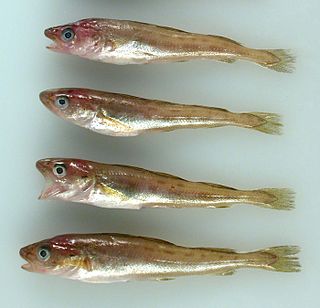
The saffron cod(Eleginus gracilis) is a commercially harvested fish closely related to true cods. It is dark grey-green to brown, with spots on its sides and pale towards the belly. It may grow to 55 cm and weigh up to 1.3 kg.
The pelagic cod is a small deepwater fish found in the Southern Ocean. It is one of only two species currently classified in the family Melanonidae, the other being the arrowtail, Melanonus zugmayeri.
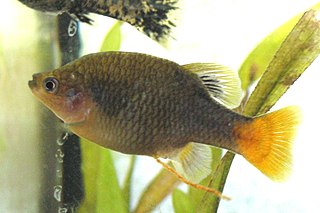
Goodeidae is a family of teleost fish endemic to Mexico and some areas of the United States. Many species are known as splitfins. This family contains about 50 species within 18 genera. The family is named after ichthyologist George Brown Goode (1851-1896).
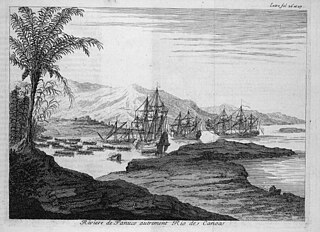
The Pánuco River, also known as the Río de Canoas, is a river in Mexico fed by several tributaries including the Moctezuma River and emptying into the Gulf of Mexico. The river is approximately 510 kilometres (320 mi) long and passes through or borders the states of Mexico, Hidalgo, Querétaro, San Luis Potosí, Tamaulipas, and Veracruz. According to the Atlas of Mexico, it is the fourth-largest river in Mexico by volume of runoff, and forms the sixth-largest river basin in Mexico by area.
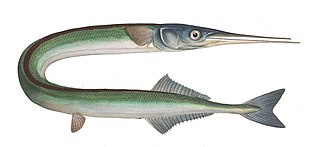
The garfish, also known as the garpike or sea needle, is a pelagic, oceanodromous needlefish found in brackish and marine waters of the Atlantic Ocean and the Mediterranean, Caribbean, Black, and Baltic Seas.
The bulldog goodeid is a species of goodeid. It is endemic to stagnant and slow-flowing waters in the Lerma–Chapala, Presa de San Juanico and Balsas basins in west-central and southwestern Mexico. Despite its relatively wide range, it is generally uncommon. This is possibly the most predatory goodeid, it feeding on other fish, crayfish, insects and other invertebrates. At up to at least 14.3 cm (5.6 in) in standard length, this is likely the second-largest goodeid, after Goodea atripinnis.

The dwarf inanga is a galaxiid of the genus Galaxias, found in the North Island of New Zealand.

The silver-stripe round herring, slender sprat, or Kibinago minnow is a small, herring-like forage fish. They are small fish used as fishing bait, especially in skipjack tuna-fishing. It is valued as food in Japan, where it is known as kibinago. These can be eaten raw, as sashimi, or cooked, as whitebait.

Characodon is a genus of splitfins endemic to north–central Mexico. Two of the species are highly threatened and restricted to pools, ponds and springs in the upper San Pedro Mezquital River basin in Durango. The third species, C. garmani, was restricted to springs near Parras in Coahuila, but it became extinct when they dried out.
The striped goodeid, bluetail goodeid or bluetail goodea is an endangered species of fish in the family Goodeidae. Its genus Ataeniobius is monotypic. It is endemic to the Río Verde and associated waters, including the Media Luna and Los Anteojitos lakes, in San Luis Potosí, Mexico. The specific name of this fish honours its discoverer, the America evolutionary biologist William Lawrence Tower (1872–1955) of the University of Chicago.

Goodea is a genus of splitfins that are endemic to Mexico. They are found in a wide range of habitats in several river basins that originate in the Central Plateau, such as Pánuco, Lerma–Chapala–Grande de Santiago and Balsas. Overall this genus is among the most widespread and successful splitfins, although they also have declined and the relatively restricted G. gracilis is considered vulnerable by the IUCN. This genus includes the largests splitfins, reaching a standard length of up to 20 cm (8 in). They are primarily herbivores, but also take small organisms like tiny crustaceans and snails. The is named in honour of the American ichthyologist George Brown Goode (1851-1896).
Obruchevichthys is an extinct genus of tetrapod from Latvia during the Late Devonian. When the jawbone, the only known fossil of this creature, was uncovered in Latvia, it was mistaken as a lobe-fin fish. However, when it was analyzed, it proved to hold many similarities to Elginerpeton, from Scotland. It was then declared belonging to the earliest group of tetrapods.
M. gracilis may refer to:
S. gracilis may refer to:
A. gracilis may refer to:
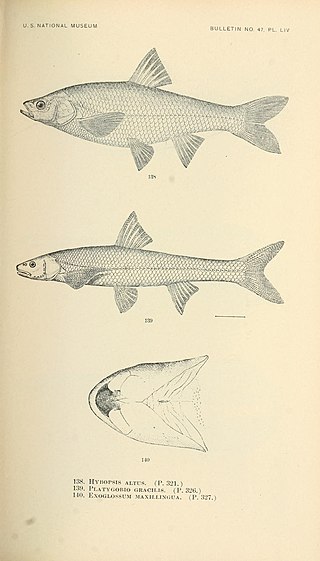
The flathead chub is a species of fish in the carp family, Cyprinidae. It is the only member of the monotypic genus Platygobio. It is native to North America, where it is distributed throughout central Canada and the central United States.
Goodea atripinnis, the blackfin goodea, is a species of killifish from the family Goodeidae. This species was described by David Starr Jordan in 1880 with the type locality given as Leon, Guanajuato in Mexico. This species occurs as a native in nine Mexican federal states and has been introduced to Durango and to the Distrito Federal. It has the largest distribution range of any species within the family Goodeidae, its range extending from Hidalgo in the east to Nayarit in the west and from Michoacán in the south to Zacatecas in the north.

Goodea luitpoldii, the green goodea, is a species of killifish from the family Goodeidae which is endemic to the drainage basin of the Lerma River and the Grande de Santiago River in Mexico. This species was Species description described as Characodon luitpoldii by the Franz Steindachner in 1894 with the type locality given as Lake Pátzcuaro in Michoacán. The identity of the person honoured in its specific name is unknown but it is thought likely to be Luitpold, Prince Regent of Bavaria (1821-1912) whose daughter, Princess Therese of Bavaria (1850-1925) was an explorer and amateur naturalist and she collected the type.
Lycodes gracilis, Vahl's eelpout or the gracile eelpout, is a species of marine ray-finned fish belonging to the family Zoarcidae, the eelpouts. It is found in the eastern North Atlantic Ocean and adjacent areas of the Arctic Ocean.










